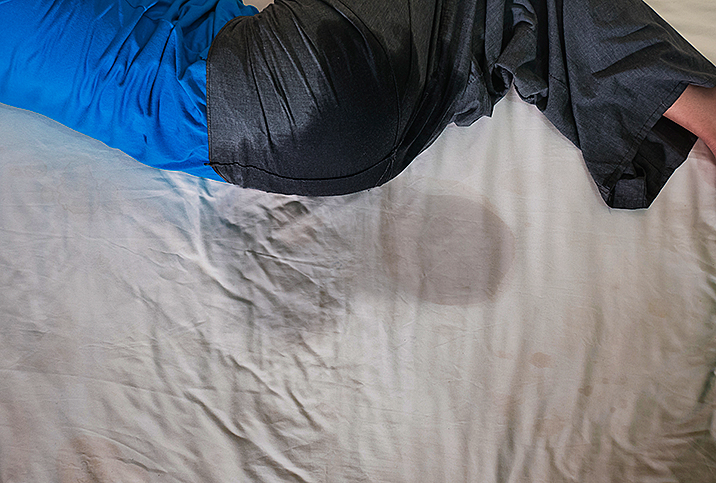Hypospadias Complications Range From Inconvenient to Harmful

In the United States every year, approximately 120,000 babies are born with a birth defect. That's about 1 in every 33 infants, according to the Centers for Disease Control and Prevention (CDC).
One common congenital anomaly in the U.S. is hypospadias, a penile condition that affects 1 in 200 babies, again according to the CDC. Hypospadias is typified by the opening of the urethra—where urine exits the body—not being located where it's typically found, at the tip of the penis.
This can mean the urethra opens slightly below the penis head where it meets the shaft or somewhere else along the length of the shaft. It can also show up at the base of the penis where it meets the scrotum, or, very rarely, even below the scrotum in the perineum.
In milder cases, such as the opening being only slightly below where it's normally found, hypospadias might be left untreated. In more severe cases, though, surgery is usually recommended to make the patient's genitalia appear and function as close to normal as possible.
Either way, boys born with hypospadias can face various challenges, including hygiene issues and other complications, throughout their lives.
Hypospadias and hygiene
"Where hypospadias gets complicated is the opening can be anywhere from almost on the top of the penis to all the way down below the testicles," said Amanda North, M.D., the director of urology at the Children's Hospital at Montefiore in the Bronx in New York City. "Obviously, if the opening is down by your testicles, that's a much more severe condition than if it's almost at the tip of the penis and you can pee standing up and not have any problems."
If a boy's urethral opening is far enough down the penis shaft, the parents, in consultation with their doctor, often opt to repair it, a procedure that could lead to issues with hygiene regarding urination.
"The muscle that surrounds the urethra or the pee channel that brings the urine from the bladder and out is called the corpus spongiosum," North said. "That corpus spongiosum contracts to get the last few drops of urine out at the end of urinating. Men with hypospadias don't have a corpus spongiosum from wherever the opening is in the penis."
What this means is boys and men who've had a hypospadias repair surgery must manually "milk" that leftover urine from the last part of their penis when they urinate.
"I would say that's probably the biggest hygiene issue that men with hypospadias have," North said. "What they may find is they have some dribbling, a couple drops on their underwear."
Hypospadias complications
Boys and men with hypospadias may run into further difficulty, however, with complications that could show up years—perhaps even decades—later.
"The problem with hypospadias is that the complication rates from the surgery range from 5 percent to 50 percent, depending on the severity of the hypospadias," North said. "If you only check the boys for up to one year after the surgery, you're going to miss more than half the complications. We now understand that these complications can show up 10 or more years after the operation."
One frequent complication is the opening of new holes called fistulas. The spot where the urethra originally ended is an obvious candidate for a fistula to open. However, it so happens they can occur anywhere along the penis where the new urethra was created.
Boys and men with hypospadias may run into further difficulty with complications that could show up years—perhaps even decades—later.
"I see some of those guys when they become adults because they have scar tissue or they have fistulized or they have curvature of the penis," said Amy Pearlman, M.D., a urologist and the director of men's health at the Carver College of Medicine at University of Iowa Health Care. "The further back the opening is, the higher likelihood of complications. That area can scar down and it can cause fistulas—abnormal connections between the urethra and the skin where they leak in a different area."
At especially high risk of fistulas are men whose original urethra opened at the juncture of the penis and scrotum or under the penis head just where it meets the shaft.
"Right where the head of the penis meets the shaft is what we call the corona; that's an area that has diminished blood supply and it's usually a little tighter closure there, so that's a high-risk area for fistulas," North said. "But those fistulas can occur anywhere, and they can occur delayed."
Another common problem is the urethra the surgeons created in the infant's penis begins to close down as the child grows to adulthood. It's called a urethral stricture and can show up later in life, according to North.
Hair down there
North has encountered another hypospadias complication with a patient who had a repair surgery as a baby.
"We use the surrounding tissue to build the urethral channel when they're babies," North said. "I recently had a young man come in who is 15, so he's going through puberty. Well, he didn't have pubic hair when he was a baby. But now, when we put a camera inside his pee channel, he's growing pubic hair on the inside. I literally just plucked them out."
Rest assured, nobody has to walk around with hair inside their urethra for life. Over a couple of sessions, the plucking eventually got rid of the hairs, and lasering is another option.
While hypospadias remains one of the most common birth defects in the country, modern surgical techniques have been honed to deal with it as necessary, and there are support groups to help both men who've had surgery and those who haven't.
But as common as hypospadias is, pediatric urologists like North emphasize long-term complications are frequent, and some responsibility lies with the patient to make sure any problems are taken care of as they become an adult.
"Men who've had hypospadias repairs as children can get complications later in life," North said. "So if they're having urinary symptoms, they do need to see a urologist."


















